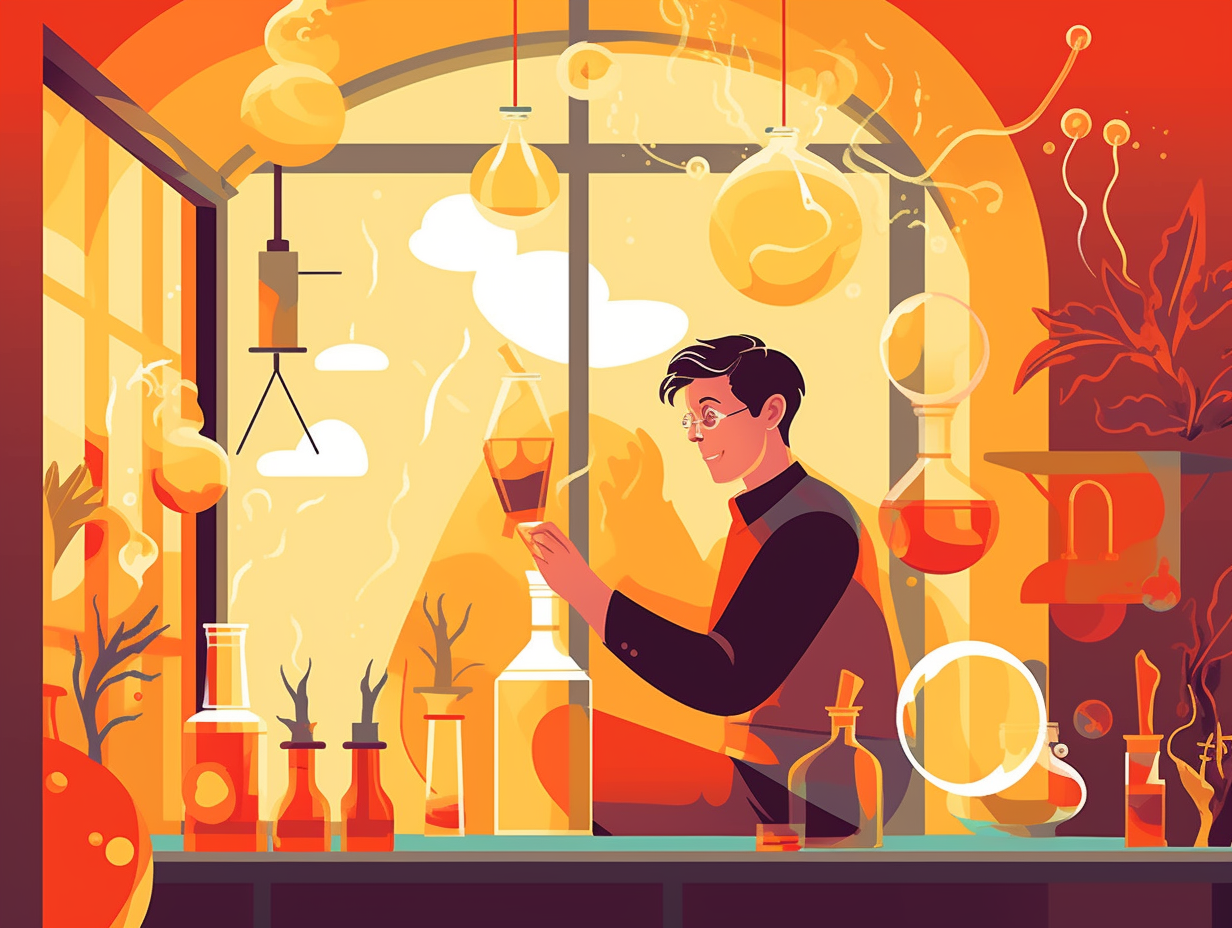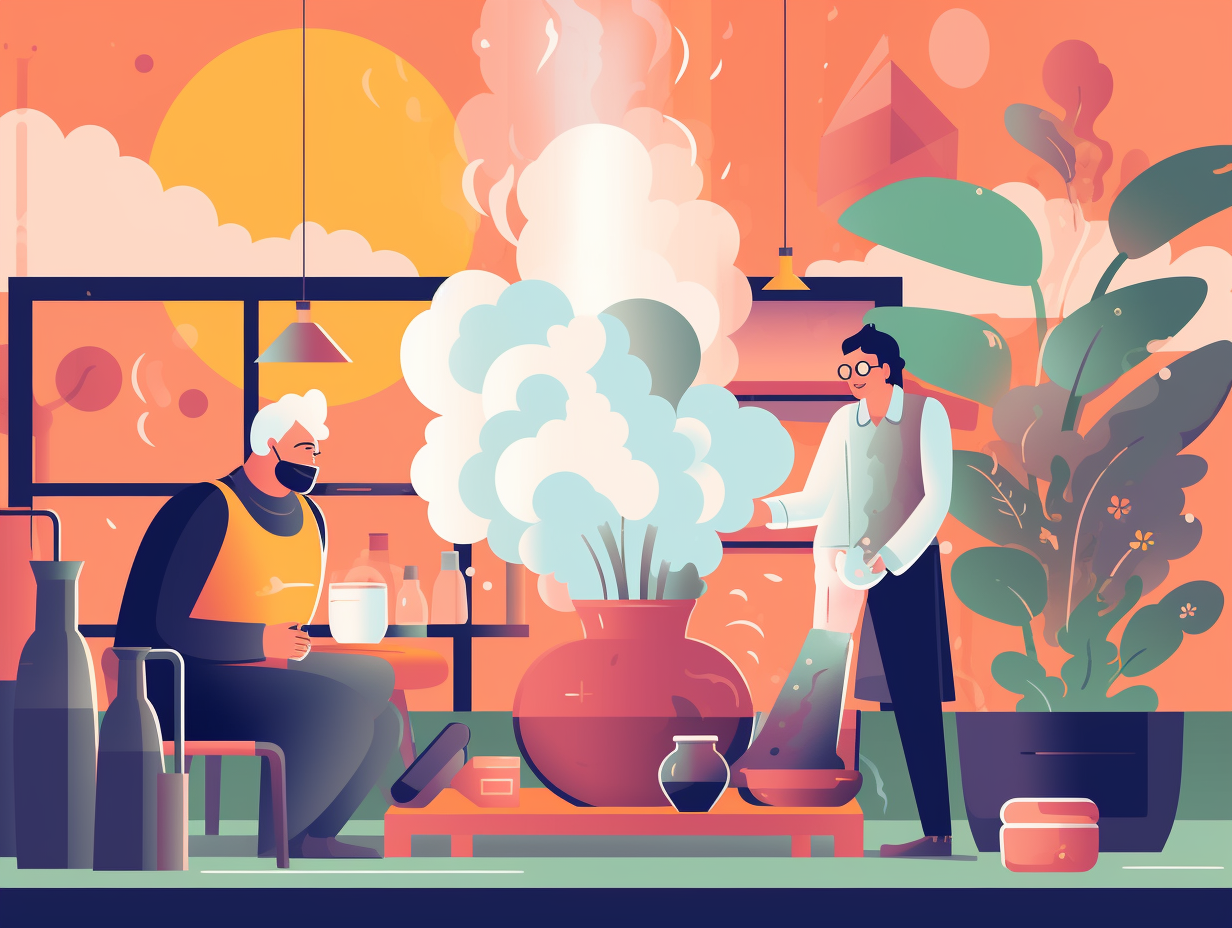Discover the Spark: Top 11 Fun Facts About Chemical Energy You Never Knew!

1. Lemon Battery
When life gives you lemons, make a battery: By jamming zinc and copper electrodes into a seemingly innocent lemon, you can actually create a simple battery, or a lemon cell, that can power up small devices – all thanks to the chemical reaction between the metals and the electrolyte concealed in the zesty fruit.
Source => en.wikipedia.org
2. Post-Coital Serotonin
Love-struck insomniacs, rejoice! Mother Nature's got you covered in a cuddly blanket of post-coital bliss: As serotonin decreases during the initial attraction phase, sleeplessness and obsessive thoughts about one's potential partner may occur, but engaging in some hanky-panky can actually increase serotonin levels, returning a sense of calm and contentment to the smitten sleeper.
Source => myvitawellness.com

Did you know bananas contain a radioactive isotope? Discover why eating thousands of them still won't harm you! 🍌☢️
=> Fun Facts about Chemistry
3. Deodorant Fairy
Did you know that aluminum chloride, the spunky cousin of Aladdin's genie, has a hidden talent? It masquerades as a deodorant fairy! When faced with the prospect of damp underarms, it fearlessly dives into the sweat scene, turning droplets into gel plugs like a microscopic Houdini: In reality, aluminum chloride, a key ingredient in antiperspirants, doesn't stop sweat; it reacts with it to form a gel-like barrier that keeps our underarms feeling drier, subsequently reducing sweating. P.S. No lamps were harmed in the production of your antiperspirant.
Source => sweatblock.com
4. Explosive Chemistry Party
Talk about a smashing good time: when potassium chlorate and red phosphorus throw a bash, it involves a big bang, bright sparks, and smoke – but remember, this explosive party is invite-only and strictly reserved for trained professionals in controlled lab settings!
Source => chem.washington.edu

5. Fireworks' Colorful Chemistry
When you're feeling "blue," know that fireworks have got your "back": The vibrant colors we see in fireworks are actually formed by specific mineral elements, with barium producing greens, strontium crafting deep reds, copper concocting blues and purples, and sodium churning out yellows. Silvery white shades are born from a team effort of titanium, zirconium, and magnesium alloys. These minerals are also heroes in oil and gas production, signaling, and high-temperature ceramics, proving that elemental chemistry brings more than just the "ooohs" and "aaahs" to our lives.
Source => usgs.gov
6. Carrots' Night Vision Powers
Carrots: the underground sunglasses for rabbits! But don't be fooled; these crunchy orange delights aren't just for fashion – they host a superpower called beta-carotene, which helps our bodies make vitamin A: essential for converting light into signals for our brain, giving us night vision. Just remember, though, your eyes might not get upgraded to night goggles solely by bingeing on Bugs Bunny's favorite snack, as our bodies control the accumulation of beta-carotene; vitamin A supplements might be a more effective ocular boost.
Source => scientificamerican.com
7. Plants' Photosynthesis Split
Did you know that plants have the ultimate "split personality" when it comes to their version of baking in the sun? Some say it's even better than getting a tan: You see, there are different types of photosynthesis - C3 and C4 - with unique processes that result in different compounds during the Calvin Cycle. C3 photosynthesis, the more common clique, creates a three-carbon compound, while the cool cats of C4 produce a four-carbon intermediate compound that divides into carbon dioxide and a three-carbon compound. This dynamic duo of C4 plants thrives in low light or water situations, making them the ultimate party guests in any environment!
Source => nationalgeographic.org
8. Coal's Climate Cha-Cha
Feeling hot, hot, hot? Blame it on the burning boogie-woogie of coal: In every fiery yet funky combustion of hydrocarbons (found in natural gas, petroleum, and coal), we're left with carbon dioxide, water, and heat. Coal's got the moves to release more carbon dioxide than its counterparts, making it the king of climate cha-cha. So, dance on this - carbon dioxide can't be eliminated unless we stop burning those fossil fuels. Ole!
Source => energyeducation.ca
9. Chitosan: From Bugs to Food
You'd think it's the bee's knees for bug body armor, but chitosan – a derivative of chitin – has found its way from creepy crawlies to culinary kitchens: Proving its versatility beyond yucky exoskeletons, this quirky chemical energy source has made quite a splash as a nonabsorbable carrier, thickener, gelling agent, and even a color and flavor additive in the food industry, as it helps to extend shelf life and enhance the quality of fruits like tomatoes and pears by inhibiting microbial growth. So next time you're munching on chitosan-laced grub, remember, it's not just for bugs anymore!
Source => sciencedirect.com

10. Dough-Rising Showdown
In a baking world of leavening agents, imagine baking soda as a one-hit-wonder, yeast as a marathon runner, and baking powder as an energetic party trickster: each spewing chemical energy to make your dough rise. The fun is in the details: baking soda unleashes a quick burst of carbon dioxide when it meets an acidic pal, like cream of tartar, while baking powder fizzes carbon dioxide in two impressive stages, and yeast steadily munches on starches to burp out the desired carbon dioxide as it hops on the rising dough express!
Source => sciencing.com
11. Cheesy Rennet Alternatives
Cheesy enough to make you rennet and rave: With calf rennet on the decline, cheese makers are turning to microbial rennet and fermentation-produced chymosin as alternatives. These substitutes boast high hydrolytic activity, low general proteolytic activity, and have proven successful in creating various delicious types of cheese.
Source => sciencedirect.com
Related Fun Facts




















